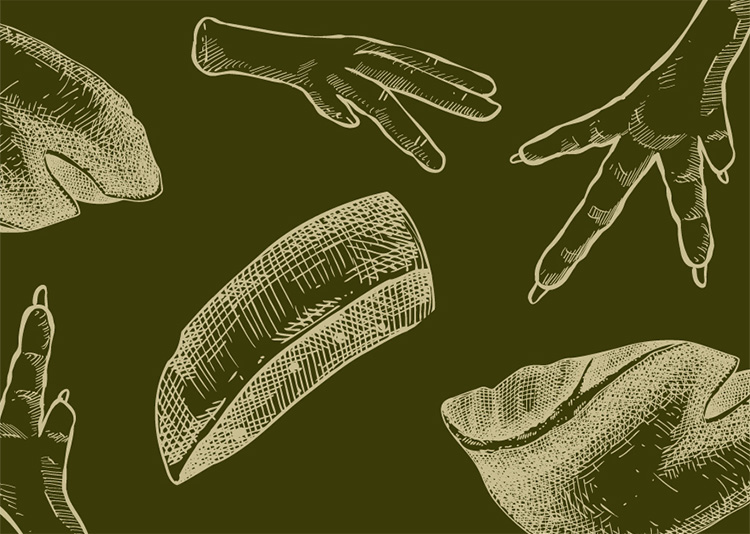We aim to give dogs a better quality of life by supplementing their everyday diets with quality nutritionals without it being overwhelming.
We were founded to give a voice to our canine counterparts. The world has overcomplicated and over-saturated us with what we think is best for them. However, in reality, they are the only ones who know what best suits, sustains, and satisfies them. This knowledge is deep within them, and it has always been there. Our job is to truly listen, understand, and provide them with what that is.
This is why we do what we do here at CANINE. No matter how complex or confusing people try to make anything in this world, it all comes back to the basics. These basics are where we built our foundation. With that focus comes growth, development, and daily improvement.
CANINE's raw nutritional items target the major health issues found in dogs
- ✓ Joints
- ✓ Weight
- ✓ Vitamin D Deficiency
- ✓ Gastrointestinal Dysfunction
- ✓ Skin and Coat
- ✓ Dental Hygiene
- ✓ Mental and Emotional Balance
HOW MUCH CANINE SUPPLEMENT SHOULD I FEED MY DOG?
Let's get to know your dog.
OUR WHY
Dogs have made a fascinating journey from wild wolves to our cherished canine counterparts, and the importance of a diet that aligns with their carnivorous nature is Our Why. Its amazing to consider that irrespective of their diverse breeds and appearances, dogs have retained such a strong genetic link to their wild ancestors, highlighting the pivotal role of diet in their health and well-being. This is why feeding our canine companions a diet that echos the variety and rawness of what they would have encountered in the wild helps to support their foundational nutritional needs, fostering vitality and longevity. It's a modern take on an age-old blueprint for their dietary needs.

Unity is the Pack's Fundamental Strength
At CANINE we are dedicated to forging a fellowship of individuals who cherish the unique relationship we share with our dogs. There's nothing quite like the deep connection between a person and their dog—their partnership forms a Pack defined by unwavering strength and loyalty. We, as a community, recognize that our dogs are not just pets; they represent integral parts of our identity and aspirations. It's almost as if we humans look up to our dogs with a touch of envy for their remarkable ability to remain fully present, ignoring the chaos of the world, and focusing solely on the unity of the Pack. CaNine recognizes that within the Pack, this sense of unity is not just a way of life—it's everything.

Frequently Asked Questions
Whether you're just starting your canine counterpart on a raw food diet or have been doing it for ages, you may be curious about adding kibble to the mix. Adding dry foods alongside your pet's raw meals can be a convenient, cost-effective way to feed your four-legged member of the family. But, is it safe?
There's a lot of misinformation about feeding your canine a raw food and kibble diet. The mission at CANINE is to clear that up for you. Below we touch on the how and why you should mix raw food with kibble and other highly processed dog food to create a more nutritional diet for your canine.
Common Myths
It is obvious that raw food and kibble are completely different sources of nutrition. Raw is packed full of protein, fat, and moisture, and is low in carbohydrates, while the kibble is low in moisture and contains highly variable levels of protein, fat, and carbohydrates.
Many people believe these distinctions cause the foods to digest at different rates. And, more specifically, that processed kibble increases the pH of the stomach, making it more difficult to digest raw meat.
However, this is not the case. Your pet's GI tract does not make the distinction between "kibble" or "raw" once the food has been chewed, mixed, and reached the stomach. The GI tract just sees water, protein, fatty acids, and carbohydrates, and secretes acids, hormones, or alkaline substances based on the amount of each. The digestive enzymes can easily break down and gain essential nutrients from these macronutrients regardless of where they came from.
Some people also believe that mixing raw food with kibble can cause their pet to have an upset stomach. However, it's not the food that can cause an upset stomach but any sudden changes in the protein, fat, and carbohydrates in the diet.
A sudden switch from kibble to raw dog food or vice versa can be a shock to the system. That's why dog owners can gradually make the switch from kibble to raw or mix both to help their dog's stomach bacteria adapt.
Bacteria naturally exist in your pet's gut. The amount and types of bacteria can change and eventually stabilize according to the type of food your dog eats. Of course, kibble and raw feeding provide your pet with different types of nutrients that can affect bacterial growth.
Again, while sudden changes may cause an upset stomach, mixing raw and kibble is nothing your pet can't handle. Your dog's stomach has hydrochloric acid in large concentrations, so their digestive systems are ready to process rough foods.
